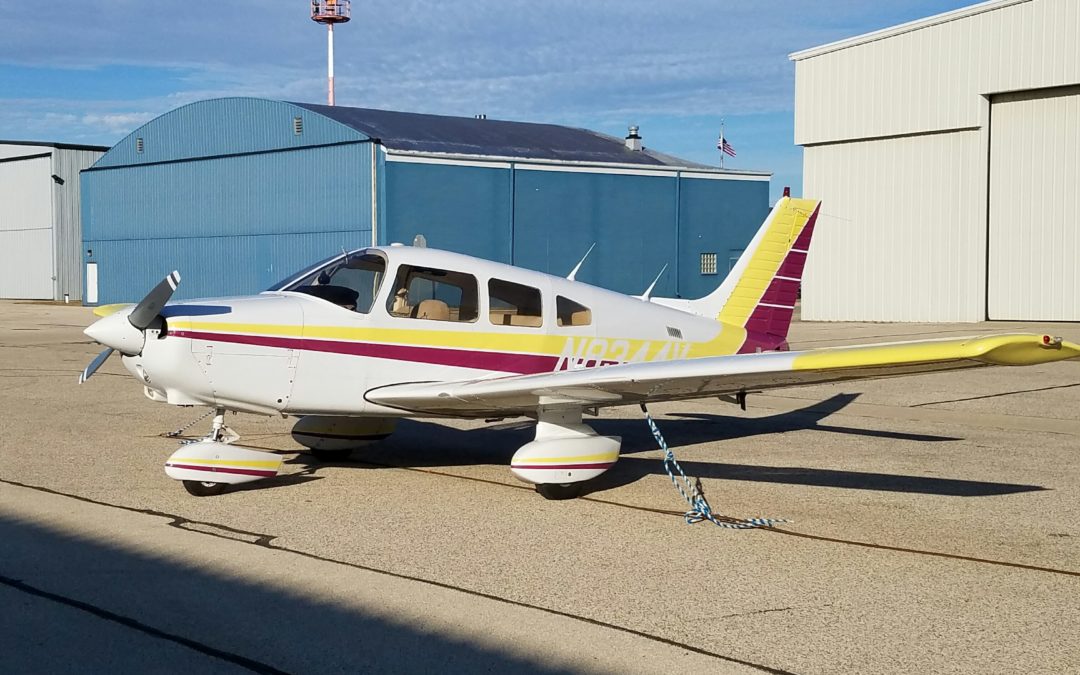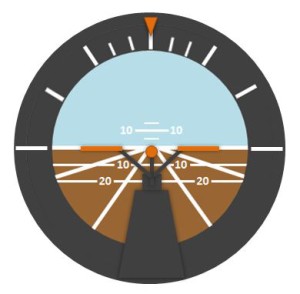
by Joseph Standley | Mar 5, 2017 | All Pilots, Instrument Training, Pilots, Student Pilots
Flight Instructor Joe Has Opened a Flight School
The time has come to buy a plane and start my own flight school. I have been teaching for many years and have really enjoyed helping people learn to fly or to advance their skill level. I have been an independent contractor, flight instructing from various places for years. It has allowed me to meet many new people, which I really enjoy, but there has been something missing.
I realized that even though I enjoy what I do, that I was doing it for someone else. My attention to detail and doing the best I could do for my students helped give a good reputation to the flight schools or clubs where I gave training, but at the end of the day, I would go home without anything of my own to show for my years of teaching. I decided that I wanted something to show for my hard work and passion. I know I won’t get rich off a flight school, but it’ll be mine. I will still get to do what I love but I will have my own flight school to show for my hard work.
The Plane
I have a 1983 Piper Warrior II with a Garmin 530W. This year Warrior goes faster and carries more weight than an older Warrior and has a max ramp weight of 2447 pounds with a top cruise speed of around 122 knots. The Garmin is great for instrument training and super easy to use. The plane is also very easy to fly and handles great for those of you that are considering getting their pilot license.
Where The Flight School is Located
My flight school is based out of 3CK (Lake in the Hills Airport), which is around 25 miles WNW of Chicago. Look for the big blue building where the Flight Center is located, right next to the taxiway and you’ll find my office inside. Everything should be ready to go by March 11th. Feel free to email if you have questions or want to get started.
What I Have to Offer
I can get you your pilot license, instrument rating, flight review, IPC and more in your plane or mine. I also do a 10 Day IFR rating and can also help you with pinch hitter training for those pilots that want their non-pilot spouse to learn to land the plane safely. If you have a specific area or some ground knowledge you’d like to improve, such as a review of airspace, towered airport operations, crosswind landings, emergencies, performance charts, GPS use or anything else you can think of, just let me know! The plane is also available to rent. You can email me from this site or contact me from the Flight School website here. I look forward to flying with you!
Joe Standley
by Joseph Standley | Mar 21, 2016 | Instrument Training, Pilots
Finding the right 10 Day IFR Rating program
There are many accelerated instrument rating programs out there to choose from; some use simulators and some fly real planes in real IFR. There are experienced and inexperienced instructors. Some work out of a hangar, FBO or a small room and some work out of a big fancy building. Choosing a simulator to save money may be the goal for some and getting in the system as much as possible is the goal for others. If you have your own airplane and are considering an accelerated IFR course, you have to figure out what you are looking for and be sure that the program you choose fits your needs.
Here is an article on choosing an accelerated instrument rating course. It talks about some of the details you should consider when choosing a course. Big and fancy is not always the best. This training program promotes flying in actual IMC as much as possible, which I agree is better than a simulator. The fastest way to get used to something is to immerse yourself in it and use it as much as possible. If you want detailed instruction that will make you a better, safer pilot and average is not acceptable to you, then this is what you want.
You can read the article here: Choosing an accelerated instrument rating program
If you want to skip the article and go right to the main page then you can do that here: 10 Day IFR Rating
by Joseph Standley | Feb 23, 2015 | Instrument Training, Pilots, Student Pilots
 Brand New IFR Student Training Material!
Brand New IFR Student Training Material!
We’ve got new material for the Instrument student who is looking for an easier way to learn real life IFR procedures!
Our new IFR training e-lessons include:
Aircraft Control for Instrument Flying talks about IFR Scanning and Correction Techniques that will help you stay ahead of the airplane by showing you how to anticipate deviations and correct for them before they happen while flying in IMC. Knowing how to anticipate and fix deviations before they happen will reduce your workload and make flying IFR much easier. Learn about straight and level flight, constant airspeed climbs and descents, turns, airspeed and vertical speed control and more.
Holds is an e-lesson that breaks down IFR holds into steps you can understand! Visualizing holds and hold clearances will be much easier for you. You’ll learn how to enter holds without difficult calculations. You will also learn about published and non published holds, holding at intersections and over VOR’s, wind correction, time correction and more.
IFR Clearances and Radio Communication talks in detail about how to pick up your IFR clearance on the ground or in the air, at airports with & without a control tower. It covers various different methods so you don’t get stuck wondering what to do. You will also learn how to communicate with ATC, Tower Controllers and on the CTAF with examples of exactly how you need to say it. It will also cover clearance void times, valid times, clearance on request and hold for release situations.
IFR Emergencies and Instrument Failures explains in detail many different dangerous scenarios that could happen to you while flying IFR. It will teach you exactly what you need to do when things go bad while flying IFR. Learn how to recognize instrument and equipment malfunctions, and anticipate how their failure will affect what you see and do to maintain control of the plane. You will learn how to recognize all the warning signs and maintain control with vacuum failures, gyro instrument failures, electrical failures, pitot static, icing and more.
Managing Single Pilot IFR Approaches discusses the details of what you should be doing and planning during your IFR flight to help you stay ahead of the plane by properly managing your workload. You will learn how to anticipate what the controller will say to you before he says it and to visualize where you are easily. Reading back approach clearances and setting up your approaches will be much easier for you.
Preparing for your IFR Flight takes you through everything you need to check in preparation for an IFR flight, where to find it and why it is important. You will learn how to choose a destination airport, how to choose an alternate airport, things you need to know before taking off or landing at an airport from a legal and a safety standpoint, Stars, DP’s, Obstacle clearance requirements, weather requirements, etc.
Low Altitude Enroute charts Covers commonly seen and used symbols and information during IFR flight that will help Instrument Students to be able to interpret what they see easily.
IFR Approach Plates and Approach Types discusses the many different things you will see on Precision & Non-Precision approach plates such as: MSA, DA, MDA, VDP, Circling & Straight in Approaches, Missed Approaches, Procedure Turns, Transitions, Feeder Routes, IAF, IF & FAF & More. Covers things you need to know at a glance that will keep you safe while doing an approach.
If your current Instrument training material isn’t explaining things in enough detail and you need steps that take you by the hand and walk you through the process, then this is for you!



 Brand New IFR Student Training Material!
Brand New IFR Student Training Material!